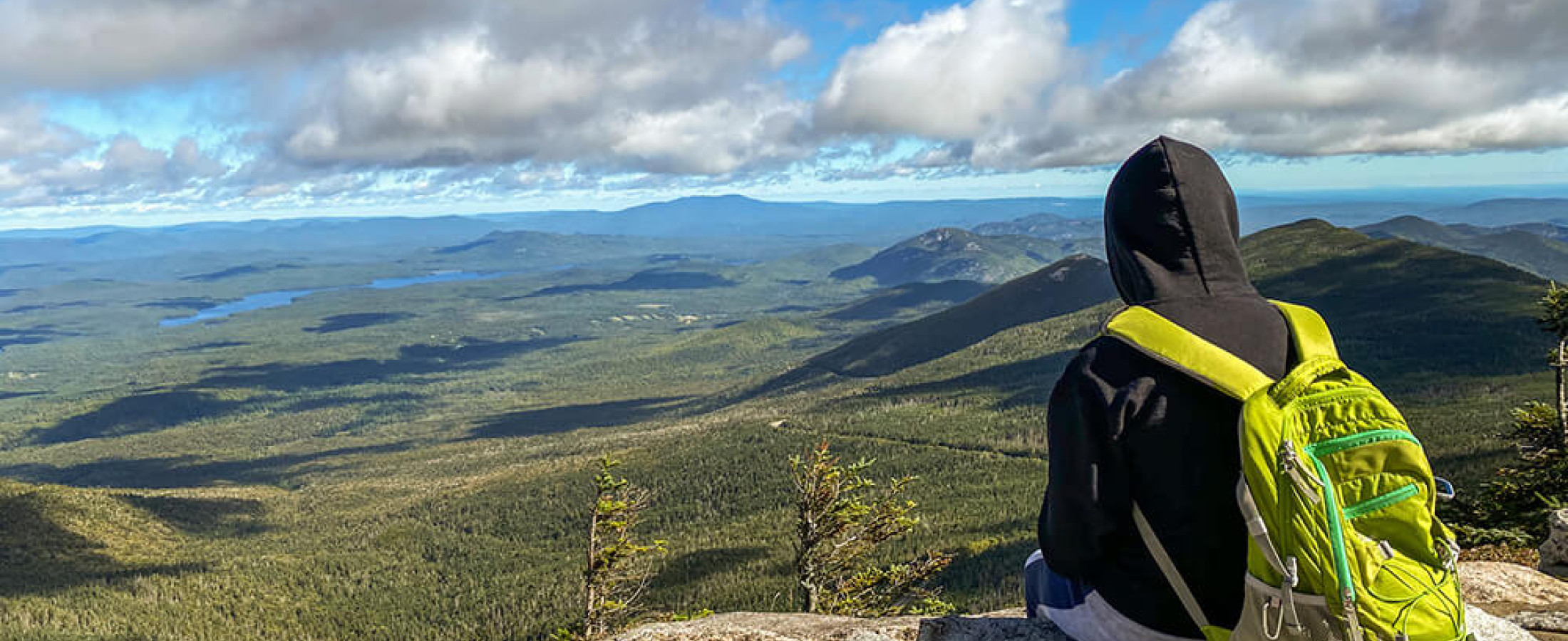
Thrill in the Wild: Adirondack Hiking Safety Tips and More
With more ideal weather for outdoor activities, the Adirondacks are the perfect getaway destination. Home to the most extensive hiking trail system in the U.S. with more than 2,000 miles and 46 High Peaks, the six-million acre park attracts 7 to 12.4 million people each year.
If you’re planning a trip for an outdoor adventure, prepare yourself with the proper gear and knowledge for a safe experience. Taking the necessary steps could mean the difference between an enjoyable trip and a possible emergency.
Essential Gear for Safe Hiking in the Adirondacks
Hiking gives you the opportunity to explore the outdoors, providing exercise and nature. You can start on an easy route or challenge yourself to an overnight stay.
Before you begin a long trek through the Adirondacks, make sure you’re prepared. You’ll need some essential items to stay safe.
- Navigation: Map, compass or GPS system
- Insulation: Waterproof and windproof jacket
- Light: Headlamp, flashlight, lantern, and extra batteries
- First-aid supplies: Pre-made or customized
- Emergency kit: Whistle, signal mirror, duct tape, and pocketknife/multi-tool
- Fire: Matches in a waterproof container, a lighter, and fire starters
- Food: High protein and calorie items
- Water: Carry plenty of water for short trips. For remote or backcountry hikes, use a water filtration or purification system to remove bacteria and other contaminants before drinking from a natural source like a lake or stream.
- Sun and insect protection: Sunglasses, sunscreen, hat, and bug repellant
- Emergency shelter: Tent, space blanket or tarp
Make sure you have a complete checklist with all your essential gear. You may need more than the basics depending on your trek.
Adirondack Backpacking Checklist for Beginners
You can also up your hiking experience with backpacking. Everything you need for an adventure is in a pack on your back. When you’re backpacking outdoors, you carry your clothes, food, and camping gear. If you have never experienced a backpacking trip, make sure you have experience with hiking and camping. You may decide to choose a trip closer to home and people.
To safely backpack, plan and bring the essential gear. It will be the same gear as hiking, but with additional items to carry. Also, when you start your trip, consider some other safety measures to make it enjoyable.
- Never feed or touch the wildlife or walk off-trail.
- Make sure to stop at the trail registry to sign in when you start and sign out at the end of the hike.
- Always tell someone where you are going and when you’re returning. If you can, hike or backpack with a buddy.
- Research the area for weather forecasts, trail conditions, and any hazards. Check with a ranger or park staff for assistance or check out DEC’s Adirondack recreation resources for notices, contact information, and more.
- Store your food properly in containers such as bear-resistant canisters.
- Dress in layers to adapt to the weather conditions.
- Be aware of your surroundings and watch out for any danger.
- Stay hydrated and pack a balanced diet for energy.
- Be vocal with a bell or whistle, or shout to alert those around you, especially during hunting season.
- Take rest breaks to avoid any injuries.
- Create an emergency plan in case you’re injured or get lost.
- Plan accordingly with sunrise and sunset times and set a turnaround time.
Staying Safe During Fishing
Fishing is one of the many ways to enjoy the outdoors. Either from a boat or the shore, it’s important to keep yourself and your fishing partners from any danger. Like hiking and backpacking, always remember to bring a first aid kit, sunscreen, a hat, insect repellent, and plenty of water.
- Always wear a personal flotation device when boating. New York state law requires anyone operating any type of watercraft to have U.S. Coast Guard-approved life jackets for each person on board. If you’re fishing from the shore, a life jacket is not required but recommended for safety. Depending on where you fish, you may be required to wear one so check the regulations.
- Watch the weather before heading out
- Always fish with a buddy
- Wear comfortable, non-slip shoes
- Handle sharp hooks with care
- Watch your surroundings before casting
- Look for trees, branches, rocks, and other debris when boating
- Bring your fishing regulation guide and ruler to determine if your fish are the correct length to keep legally
Staying Safe During Hunting Season in the Adirondacks
Safety is vital for enjoying nature, especially during hunting season. Make sure you follow all hiking or backpacking guidelines with these additional safety measures to make your walk risk free.
- Know the season: Typically hunting season is open from September through December. Visit the New York State Department of Environmental Conservation for specific dates and regulations.
- Plan your trip: Decide where you’re hiking ahead of time. Hunting may be allowed or prohibited depending on the park, so make sure to check before you go. You may consider parks and areas with no hunting.
- Wear bright colors: Dress in high visible colors so hunters can see you. Clothing should have colors like red, orange, or yellow. Avoid brown, green, and whites. If you bring your dog, it should wear bright colors and be on a leash.
- Stay on the trails: Use marked hiking trails to avoid hunting zones.
- Avoid dusk or dawn: Hiking during the day is safer than early morning or late evening when hunters are the most active.
- Respect hunters: If you encounter a hunter, be courteous and don’t disrupt them.
If you’re hunting, you can protect yourself and hikers by:
- Knowing where and when to hunt
- Avoiding hiking trails
- Alerting hikers of your presence and where you are hunting
- Verifying your target before shooting
Interested in a Fishing or Hunting License?
For details on purchasing a fishing or hunting license, visit the DEC website to check the costs and other requirements.
Respect Our Parks
Whether you’re hiking, climbing or camping, follow the Leave No Trace principles for a safer, responsible outdoor adventure.
The information in this article was obtained from various sources not associated with Adirondack Bank. While we believe it to be reliable and accurate, we do not warrant the accuracy or reliability of the information. Adirondack Bank is not responsible for, and does not endorse or approve, either implicitly or explicitly, the information provided or the content of any third-party sites that might be hyperlinked from this page. The information is not intended to replace manuals, instructions or information provided by a manufacturer or the advice of a qualified professional, or to affect coverage under any applicable insurance policy. These suggestions are not a complete list of every loss control measure. Adirondack Bank makes no guarantees of results from use of this information.

